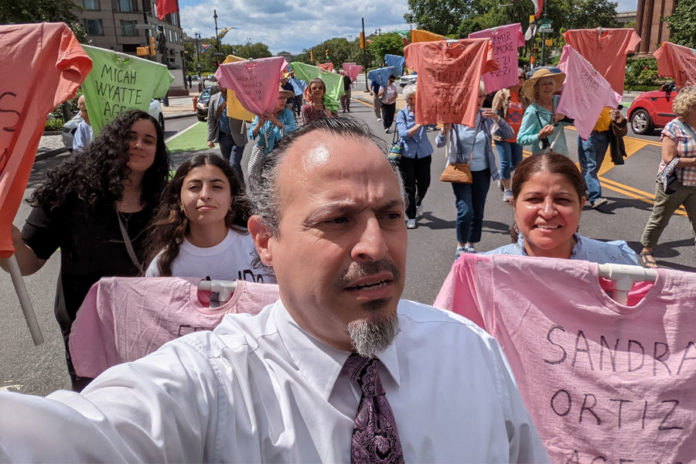On June 9, the Hispanic Clergy of Philadelphia, in collaboration with the Council of Religious Leaders, brought together some 200 leaders from the region to march, cry, and advocate for stricter gun laws and increased funding for gun prevention programs. the violence.
The event was called “From Shrine to Street, From Lament to Action” and began at the Cathedral Basilica of Saints Peter and Paul at 17th and JFK Boulevard.
The demonstration came just days after three people were killed and 11 injured on South Street, and as shootings continue throughout the city. The occasion was orchestrated for the “faith community to embrace the conversation about gun violence,” Bryan Miller, executive director of Heeding God’s Call, a faith-based group that works to prevent gun violence, told The Inquire.
Leaders representing 30 religious beliefs and expressions took turns sharing stories, mourning, and praying for the 562 victims of violence that occurred in 2021; most of whom were killed by firearms. The names of each victim and her age scrolled on a screen during the service. Rabbi David Straus of the Main Line Reformed Temple who stated that: “These are not just numbers, although the total number should both numb and terrify us, these are mothers and fathers, sons and daughters, spouses, workers, neighbors, co-workers and friends”.
People in attendance, wearing T-shirts with the names of those killed in the past year, marched toward 15th and Market streets. This is the site of one such act of violence. The Rev. Rubén Ortiz, executive director of the Hispanic Clergy of Philadelphia, along with other representatives led the group to reclaim that corner as a place of life instead of death. With the shirts raised to honor the victims, a joint prayer was held “for the Holy Spirit to redeem this space and the people, from the pain and violence that occurred there and throughout the city.”
There was someone not wearing a T-shirt with the name Terence Ryans on it: an aspiring lawyer and freshman at Cheyney University who was fatally shot with an illegally obtained firearm in 1990 when he was 18 years old. Cherie Ryans walked silently with the group, holding close to her a photograph of her son, Terence. The Southwest Philadelphia mom told The Inquirer: “Today, I’m taking my son.” Thursday’s march was one of many Ryans attended in the decades after Terence’s death pleading with lawmakers to do something about gun control laws. “I ask you to pay attention to the needs, the desires, the wishes of the people, the mothers who have lost their children.”
The procession continued across the street to City Hall, where several speakers called on state and local governments to pass specific gun restriction laws, invest more in education and violence prevention programs. The Inquirer highlighted the intervention of the Rev. Robert Collier Sr., who challenged local officials—from Mayor Jim Kenney to Police Commissioner Danielle Outlaw to the City Council—to do more to help end this war on the innocent. , adding that what the city has done so far is not acceptable. “We are at war with those who seek to kill and destroy, but the city says it has done all it can do,” said Collier, president of the Black Clergy of Philadelphia. Well, that’s not acceptable.
Collier called on Kenney to allocate at least $200 million in the city’s annual budget for anti-violence initiatives, which Collier said should include remedies for environmental hazards and air conditioning in schools and recreation centers. Kennedy’s current $5.6 billion spending plan devotes $184 million to anti-violence funding, a proposal some have criticized as inadequate.
“We need to take full account of the fact that just as all people are connected, gun violence is connected to so many other factors,” said Rabbi Linda Holtzman of POWER.
Speakers also urged the group to contact Pennsylvania legislators to enact a limit on gun purchases to one handgun per month and fund more community programs and resources in neighborhoods where shootings occur the most.

